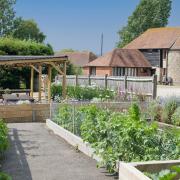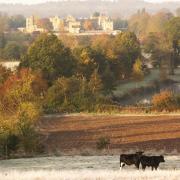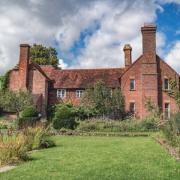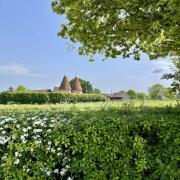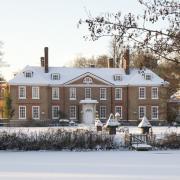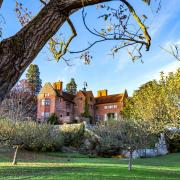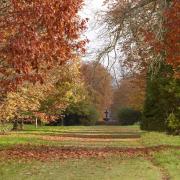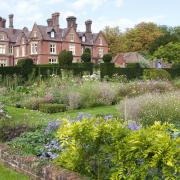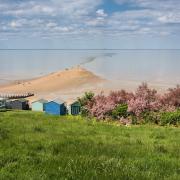A small town on Kent’s western border, this place has been home to two historic leaders, is surrounded by scenic countryside and has a great reputation for food and drink
1 Churchill’s memory

Westerham will always be known for one, very important former resident. Calling the town home from 1922 until his death in 1965, Winston Churchill raised his family at his country house – Chartwell. Said to have fallen in love with the stunning views, rather than the house itself, Churchill saw the town as a peaceful rural escape within an easy drive of his responsibilities in London. Left to the National Trust and dressed as it would have looked in the 1930s, it’s a wonderful place to visit. Take long walks in the 80-acre grounds, potter round the walled kitchen garden, admire the collections he amassed during his lifetime, and explore his study, drawing room and impressive art studio. The audio guides allow you to explore at your own pace, or take the guided tour to learn a little more about the great man himself.
2 Historic green
On the very western edge of our county, the settlement on the River Darent, mentioned in the Domesday book as ‘Oistreham’, was granted a market charter in 1227 and went on to become a thriving market town. Centred round a green and a former market square, it remains relatively small, with a pretty array of historic buildings, restaurants, shops and inns, all within a compact town centre. In one corner is the ancient St Mary’s Church, where a board shows the name of every vicar since 1278. Two impressive statues stand on The Green – dedicated to the two great leaders who happened to lived here, centuries apart. With his sword held up, ready to charge, is General James Wolfe, who grew up in a house nearby (now the National Trust’s Quebec House) and became a household name in 1759 for his great victory over the French in the Battle of Quebec. And the other statue depicts a very familiar seated figure – a striking portrayal of Churchill himself, on a jagged limestone plinth.
3 Eating and drinking
With no shortage of great places to eat and drink, Westerham is a small town with a big dining out scene. First off, try The Old Bank restaurant in the converted old NatWest building. Attracting a lot of attention, thanks to its excellent reviews and Michelin Plate recognition, its owner Adam Turley was our Kent Life Food and Drink Awards Chef of the Year in 2020. But don’t miss Napoli E, Rendezvous Brasserie, Tulsi, Sicily, Deli di Luca, the Tudor Rose Tearoom and many more. The Tap Room at Westerham Brewery has great street food and beer, while the Bottle Store restaurant at nearby Squerryes Winery offers fine dining in a fabulous setting. There are several historic pubs to choose from, especially as this was once a famous brewing town. The Grasshopper on the Green has stood for more than 700 years overlooking The Green, and was frequented by Churchill during his life.
4 Busy community
A friendly, close-knit kind of place, there’s a lot to get involved in around Westerham. Surrounded by countryside, it’s a popular spot for walkers and cyclists, with an active ramblers group and cycling club. Hike around Ide Hill, Hosey Common, Chartwell and Toys Hill, many with spectacular views thanks to Westerham’s surrounding hills, or join the weekly parkrun on part of the Squerryes Winery Estate. There’s a popular am-dram club called Westerham Amateur Dramatic Society (WADS) and even a local cinema group – Fleapit Cinema Club. Operating at Westerham Hall, there’s an annual membership fee or you can drop in and pay a guest fee. And the community comes together for a number of big events throughout the year, including the ‘Beating the Bounds of Westerham Parish’ walking event, held alongside the Rotary Fair at the beginning of May, the Westerham Rocks music festival (King’s Arms Hotel, 30 July), and the Country Fayre and Horticultural Autumn Show (10 September).
5 General’s home
The house where James Wolfe was born was once called Spiers, but was changed to Quebec House in honour of his achievements at a battle we hear little about today but which made him one of the most celebrated military leaders of the 18th century. He had joined his father’s marine regiment at the age of just 13, and went on to fight in the War of the Austrian Succession, the Jacobite Rising and the Seven Years’ War. By the time he died leading the assault on the French at the battle of Quebec, he was still just 32. He lived just long enough to see the enemy retreat. For years after his death, he was idolised as a British hero, with a wealthy Canadian buying Quebec House in 1917 and donating it to the National Trust. The home, built in the 1500s, is dressed as it would have looked during Wolfe’s time there between 1728 and 1738. It’s a fascinating insight into family life in the 18th century and offers a glimpse into his military career.
6 Famous airfield
Just a five-minute drive from Westerham, the neighbouring town of Biggin Hill is famous for its RAF connections. Still working as a general aviation airport today, but best known as a fighter station during the Second World War, it is home to busy fleets of business jets and helicopters. Here you can visit the Biggin Hill Memorial Museum in honour of ‘The Few’ who fought in the Battle of Britain, or book a tour to see the team working behind the scenes to restore the wartime aircraft most closely associated with this airfield – Spitfires. The Biggin Hill Heritage Hangar also offers customers the once-in-a-lifetime experience of a flight in one of their historic planes. It’s not the cheapest of activities but it’s certainly unique, with only around 60 airworthy models in the world.




